|
It had been another
very busy week at work. I didn't get any time to sneak away and
take photos during the week, and even on Saturday I slept in,
had a long lunch, and didn't have enough of a day left to work
with. So it wasn't until Sunday the 19th that I was back at it.
I guess I tried to make up for all of those missed days, because
I ended up taking a whole slew of pictures. (According to my software,
1 slew = 1,426.)
I had gone to Iona
beach again, to look for the Sharp-tailed Sandpipers, who had
been at the inner ponds, and for Lapland Longspurs, who had been
on the south jetty. I got so much variety that I'm going to split
my report from that day into two entries. This first one deals
with what I saw in the first part of my trip, when I was hanging
around the inner ponds.
We start with this
lady, an American Goldfinch, who is already in nonbreeding plumage.
She was hanging around the fence as I came in at the birder's
gate.
|
|
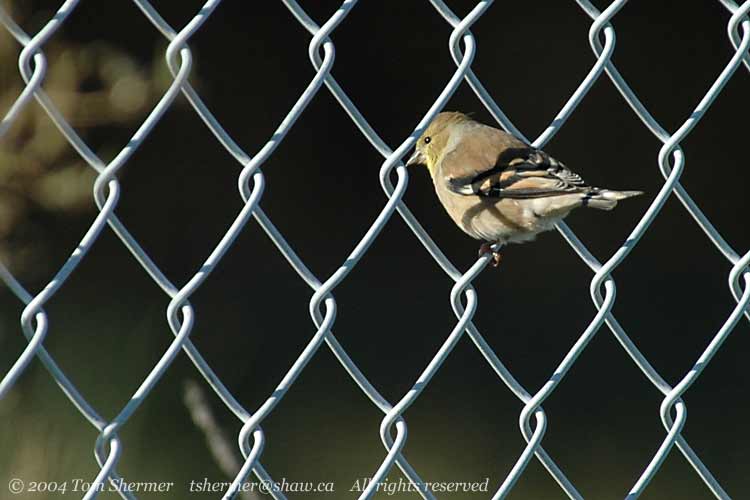 |
| This next
fellow I also found upon the fence. He's a first-winter White-crowned
Sparrow. |
|
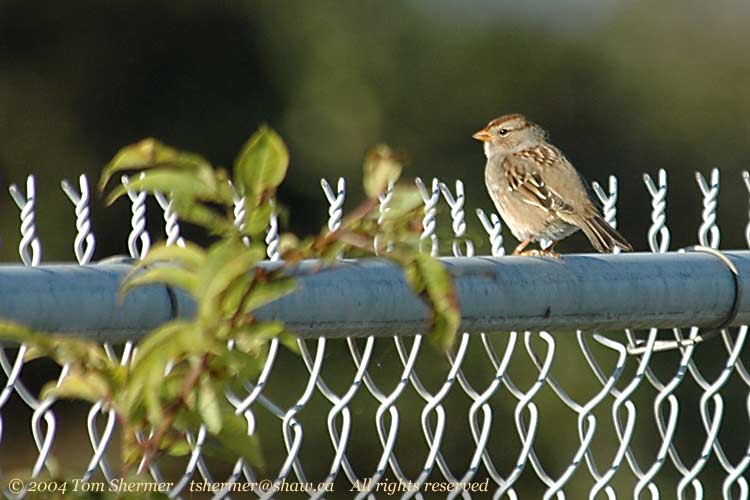 |
|
White-crowned Sparrows
have three distinct plumages: a juvenile one, which they have
from birth (around June) until about August, a first-winter one,
which they have from then until the next April, and then their
adult plumage. Here's an adult from a little later in my day.
|
|
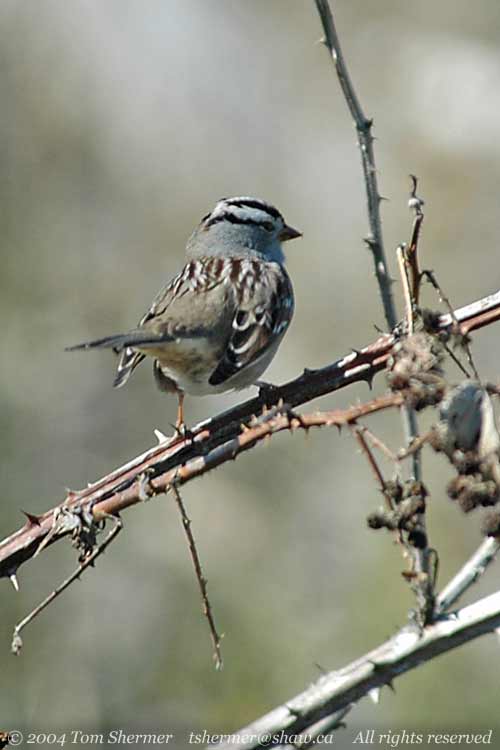 |
| The next
bird I found along the side of the ponds was a Savannah Sparrow.
Savannahs are pretty common around here, and I've sent bunches of
photos of them before. This one is grayer than the usual ones that
we get, and I think it may be one of the Grayish subspecies. Our
usual subspecies is the Reddish one, though--maybe he's just a dull
Reddish. |
|
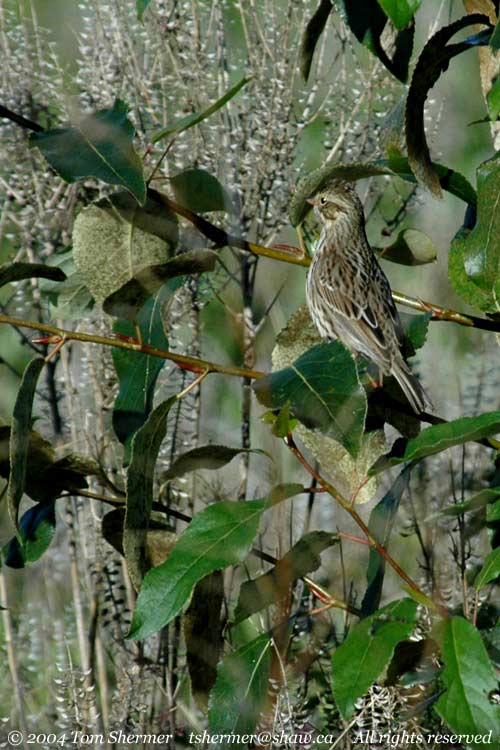 |
|
There are five or six
distinct subspecies of the Savannah.
In the dirt of the
empty (dry) southeast pond, there were a few Yellow-rumped Warblers
flying around. I like the way the white edges on the dark feathers
of their wing and tail give them a striped appearance when they
stand.
|
|
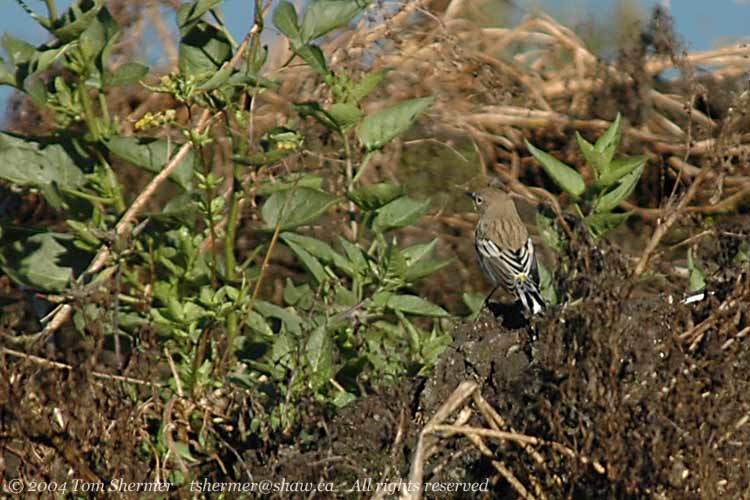 |
| Here's another
Yellow-rumped Warbler, this one much grayer overall. The shape of
the throat-patch on these birds leads me to believe that they're
both the Audubon's subspecies, with the above one being female and
the below one being male. But that's just a guess, don't take it
as gospel. |
|
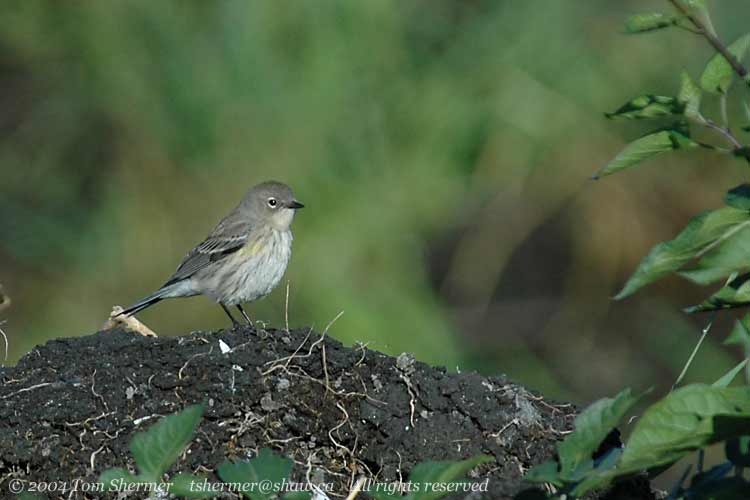 |
| A trip to
the ponds wouldn't be complete without seeing the local House Finches.
Here's a female. |
|
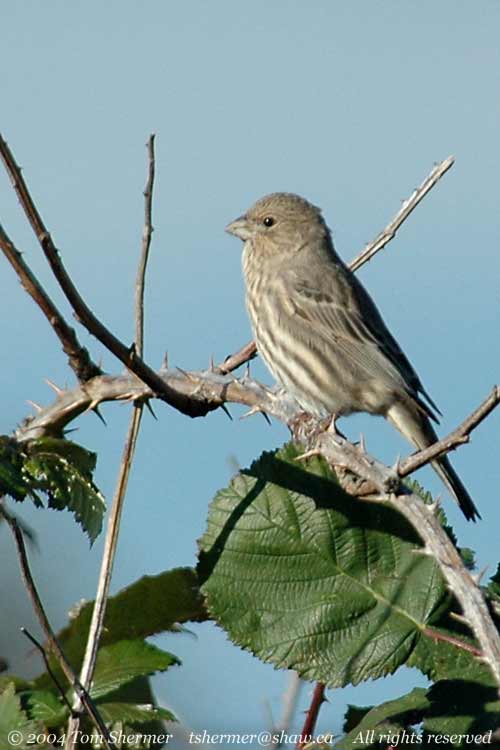 |
| I made it
over to the southwest pond and noticed another photographer there.
As I was headed towards him, I noticed a sparrow on the fence, and
took a few quick shots. It was a Golden-crowned Sparrow. |
|
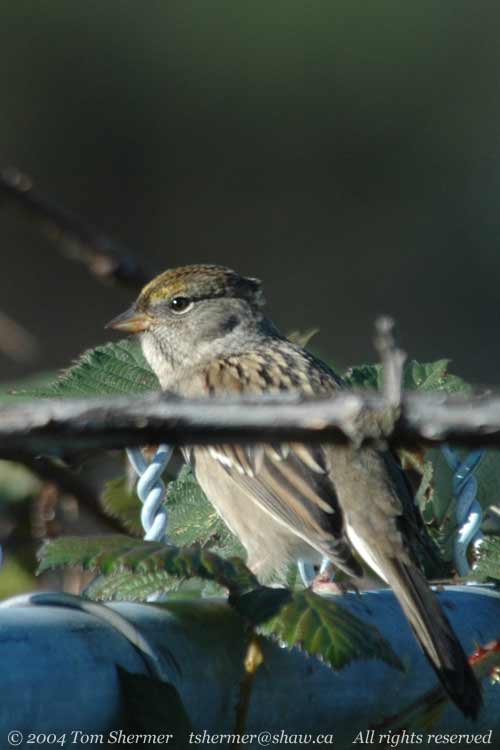 |
|
I later caught another
Golden-crowned who was all puffed up. I don't know why this particular
bird had gone puffy, but my pal Ilya told me that it's usually
because they're trying to warm themselves, or they're all relaxed.
|
|
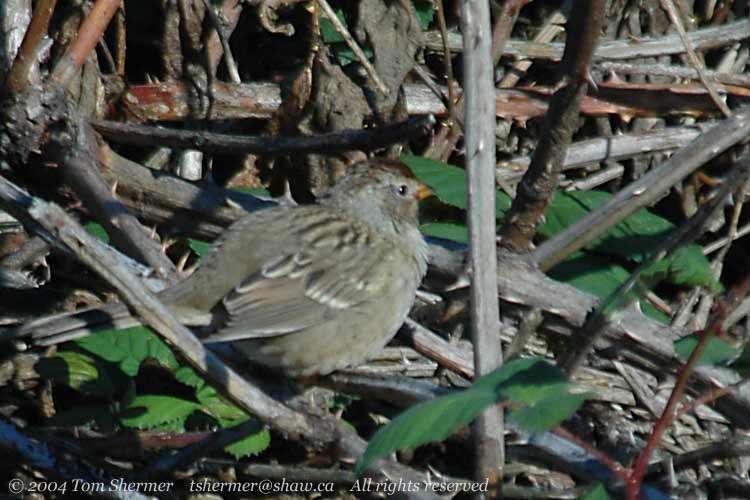 |
|
I remember discussing
the species out there that day with the other photographer, but
I don't remember who that photographer was. It was probably either
Walter or John. Anyhow, we noticed some big shorebirds in the
middle of the pond, and figured they were some kind of plover.
This one (the large bird in the photo) is a little yellowish,
and is therefore probably a golden-plover of some sort. We get
two kinds of Golden-plovers out here: Pacific Golden-plover and
American Golden-plover. I'm fairly confident this is a Pacific.
|
|
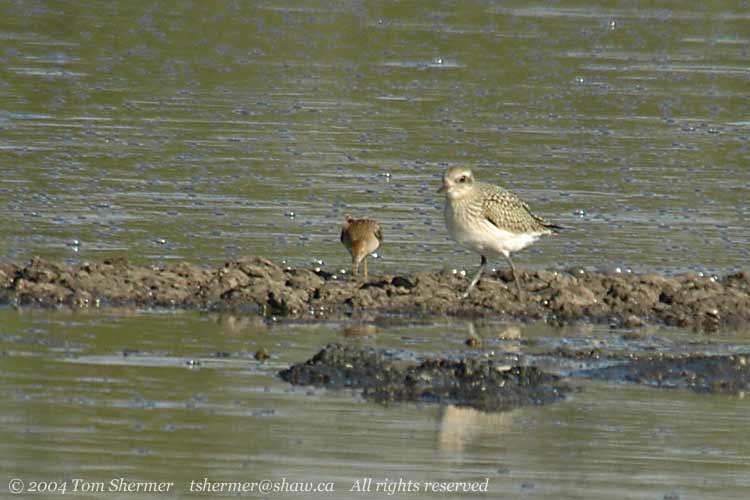 |
|
The other option for
what that bird could have been is a Black-bellied Plover; maybe
the color on the photo is a bit misleading. Black-bellied Plovers
are grayer than Pacific Golden-plovers, and have a thicker bill.
However, I still think it was a Pacific Golden-plover. It looked
different than this other bird in the pond, who is certainly a
Black-bellied Plover.
|
|
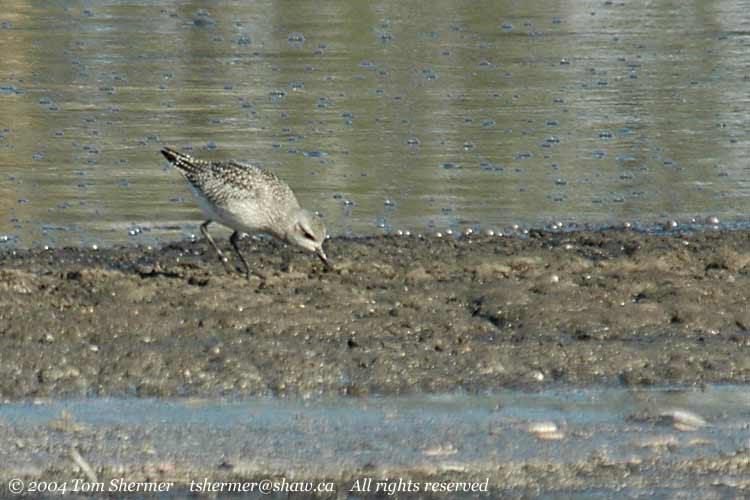 |
|
I also took a few shots
of the many Pectoral Sandpipers who were foraging in the pond.
|
|
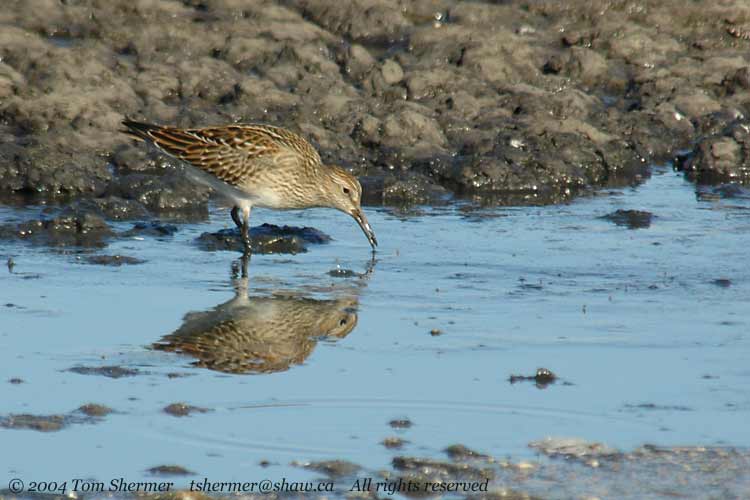 |
| There were
a bunch of other things around, too. The photographer told me that
the bird I had photographed walking along the shoreline of the pond
was an American Pipit. That'd be a lifer for me. Here's a shot of
the pipit. |
|
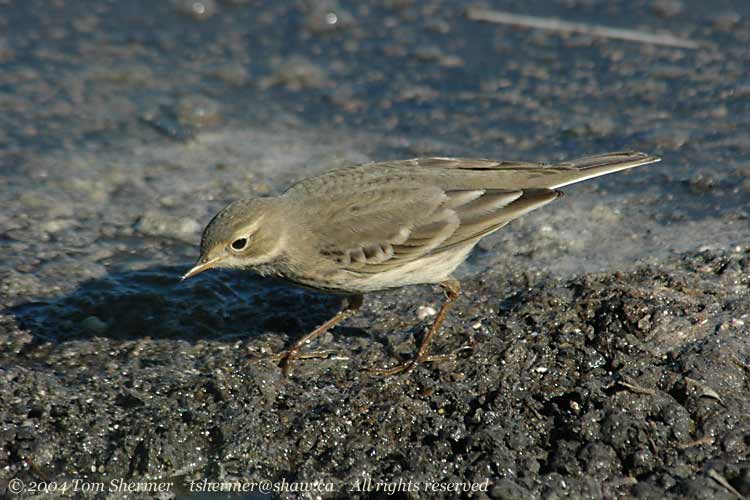 |
|
He was always so close
that I mainly got sharp downward angles on him; I didn't feel
like laying down to get his photo.
A number of Long-billed
Dowitchers were also foraging nearby.
|
|
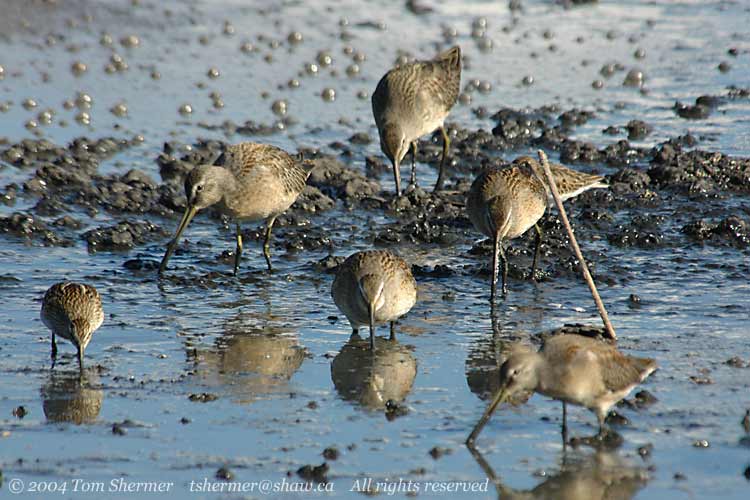 |
|
And I recognized that
the little guy to my right was a Western Sandpiper.
|
|
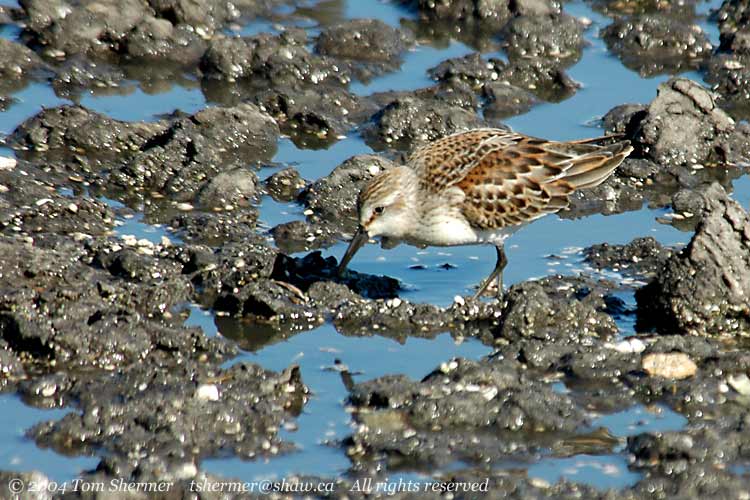 |
|
Well, in all the shorebirds,
I didn't find any Sharp-tailed Sandpipers. I decided to head on
to the south jetty to look for the Lapland Longspurs.
On my way out of the
inner ponds, I noticed a Savannah Sparrow taking a bath, and couldn't
help stopping to photograph him. He would splash around a little,
shake off the water, and look around. Then he'd repeat that, over
and over. I got a bunch of photos of a blurry bird with water
flying everywhere. Here's one of my favorites, even though it
got overexposed. He's really spinning his head.
|
|
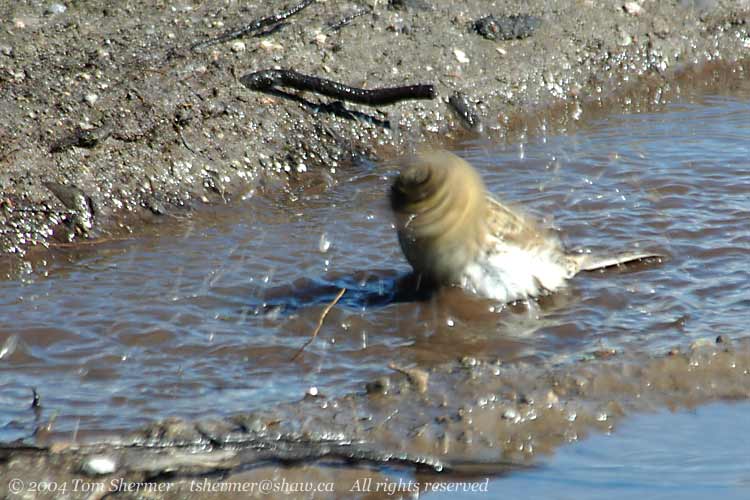 |
|
And here's a photo
where he's soaked but stationary.
|
|
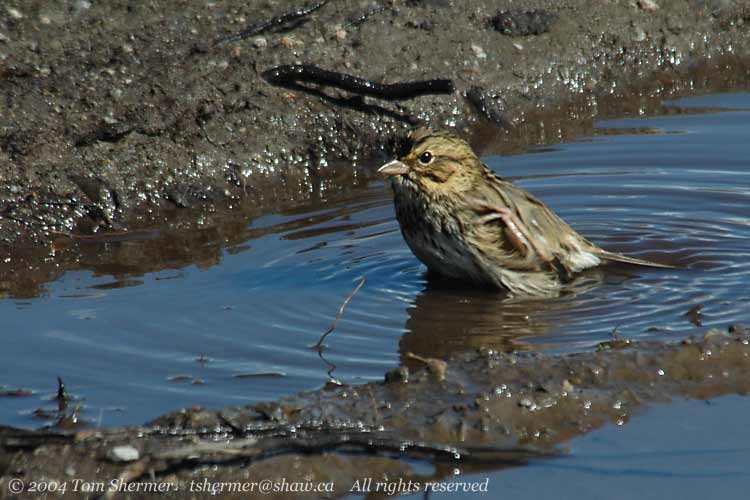 |
|
The trip out the jetty
that followed will be the subject for next time.
Plove,
Tom
|
|